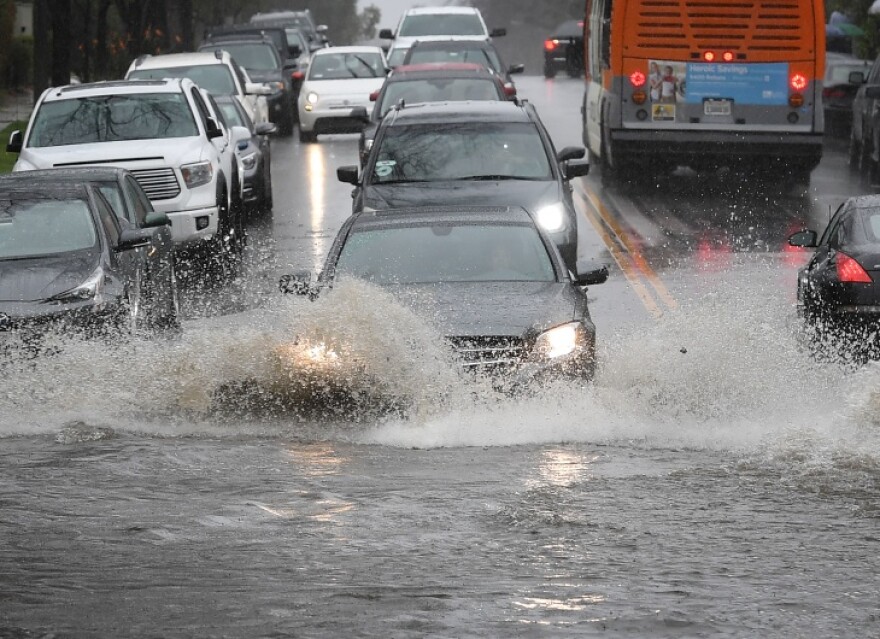Truth matters. Community matters. Your support makes both possible. LAist is one of the few places where news remains independent and free from political and corporate influence. Stand up for truth and for LAist. Make your tax-deductible donation now.
Hey LA, The Worst Time To Drive In The Rain Is Probably Not When You Think

When it's raining, Los Angeles' roads are slick. So naturally there'd be more crashes when the roads are full, right?
Wrong. Researchers from USC's data journalism project Crosstown recently crunched traffic and weather data and found some weird patterns.
Breaking down L.A. County into 236 separate grids of 16 square miles, they tracked vehicle crashes and weather for each hour of the day between 2016 and 2018.
On dry days, they found that crashes tend to peak during rush hour, when there are more fender benders.
But on rainy days, the researchers discovered most crashes happen during the middle of the day — when there's less traffic.
It's counter-intuitive, but there's a good reason.
"Anything that allows you to travel at a normal speed when it's wet is going to dramatically increase the likelihood of a [crash]" said Gabriel Kahn, one of the researchers on the project.
He explained that drivers go too fast in the rain on an open road — and don't hit the brakes early enough.
The most dangerous hour to drive during wet weather? Between 11 a.m. and 12 p.m..

Crosstown researchers also found that drivers are 80% more likely to crash their cars when it rains.
California Highway Patrol information officer Juan Galvan said on a normal day, during peak driving hours, his office might get 30 to 40 calls — but when it rains, that number can shoot up to 150.
"It all comes down to speed," he said. "Sometimes the safe speed will probably be 40 miles per hour — but people are doing 50, 60, thinking they're still under the speed limit."
Drivers often don't realize that they're going too fast for the wet conditions.
Crosstown data researcher Mingxuan Yue said it's generally hard to compare traffic against weather in L.A. County because weather can both vary over the region and change quickly. He said just calculating the rainy and sunny days in a year doesn't work.
"Rain can happen at any hour of day and can disappear — or it can happen to a specific area and not to other areas in L.A. County," Yue said.
That's why the team decided to break down the city into grids and monitor weather and traffic conditions per hour to pinpoint the data.
So what's the safest hour to drive on a rainy day?
Crosstown researchers say it's during "the thick of the evening commute" — between 6 p.m. and 7 p.m., when traffic is already bumper-to-bumper.
Kahn said there are also other variables besides weather to consider when evaluating crashes. As people move farther out from the center of L.A. County in search of more affordable housing, that means more people are commuting to work, which increases their chances of a car crash.
And then there's the issue of drivers and technology.
"They're increasingly distracted with phones, with other devices," Kahn said, adding that he has to put his own phone in the trunk of his car when he drives.
But researchers say the best way to avoid a crash is pretty simple: just slow down.







